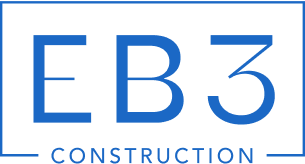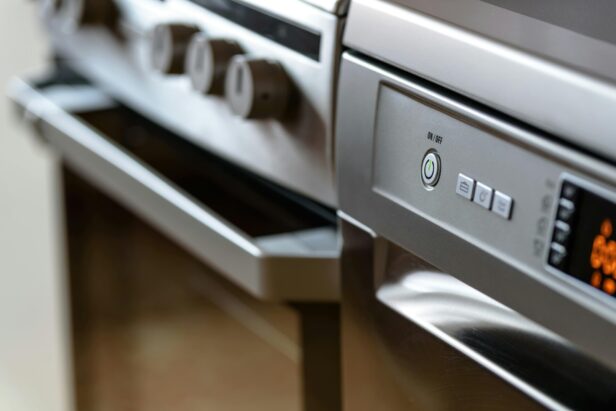Commercial kitchen ventilation systems are essential safety components installed in all food service establishments. These exhaust systems provide critical fire protection and create a comfortable working atmosphere by effectively removing odors, heat, steam, grease, and smoke. Understanding the fundamental requirements helps maintain compliance while ensuring the safety of staff and patrons.
As general contractors specializing in commercial kitchen construction, we recognize that proper ventilation is non-negotiable. A well-designed system not only meets code but also creates a safer, more efficient kitchen environment. From preventing grease fires to improving air quality, the benefits of a properly engineered ventilation setup extend throughout the entire operation.
At EB3 Construction, we approach each commercial kitchen project with ventilation as a top priority. By focusing on core requirements like fire suppression, airflow, and contaminant removal, we build kitchens that are safe, comfortable, and ready to handle the demands of busy food service. Let’s explore the key elements that contribute to an effective commercial kitchen ventilation system.
What’s the Difference Between Type I and Type II Hood Systems?

Commercial kitchens rely on two main types of exhaust hood systems, each designed for specific cooking environments and equipment. Understanding the differences between Type I and Type II hoods is crucial for proper kitchen design, safety, and regulatory compliance.
Type I Hoods
Type I hoods are essential in most commercial kitchens. These heavy-duty systems handle the challenges posed by cooking equipment that produces smoke or grease-laden vapors. Key characteristics include:
- Required for equipment like fryers, ranges, griddles, convection ovens, tilt skillets, and broilers
- Equipped with grease filters to capture airborne grease particles
- Often include built-in fire suppression systems
- Typically cost between $900-$1,700 per linear foot (2023 pricing)
Type II Hoods
Type II hoods serve a different purpose in commercial kitchens. These systems are designed for equipment producing heat and moisture but not grease or smoke. Key features include:
- Used with equipment like dishwashers, steam tables, and certain types of ovens
- Primarily function to remove steam, vapor, and odors
- Do not require grease filters or fire suppression systems
- Generally less expensive, averaging around $1,800 per unit (2023 pricing)
Choosing the Right Hood
When selecting a hood system for your commercial kitchen, consider the following factors:
- Types of cooking equipment you’ll be using
- Local health and safety regulations
- Budget constraints (Type I hoods are a significant investment)
- Kitchen layout and available space
It’s important to note that while Type II hoods are less expensive upfront, using them in place of required Type I hoods can lead to code violations, fines, and potential safety hazards. Always consult with a kitchen ventilation expert or local authorities to ensure your hood system meets all necessary requirements.
| Feature | Type I Hood | Type II Hood |
|---|---|---|
| Primary Use | For grease and smoke removal | For heat and moisture removal |
| Typical Equipment | Fryers, ranges, griddles, convection ovens, broilers | Dishwashers, steam tables, non-grease-producing ovens |
| Necessity of Grease Filters | Required | Not required |
| Fire Suppression System | Typically included | Not included |
| Cost (2023 pricing) | $900–$1,700 per linear foot | Approximately $1,800 per unit |
Understanding the differences between Type I and Type II hood systems ensures your commercial kitchen is properly equipped to manage specific cooking processes. This not only promotes a safer work environment but also helps maintain air quality and comply with local health codes.
How Do You Calculate the Proper CFM for Kitchen Ventilation?
Calculating the proper cubic feet per minute (CFM) for commercial kitchen ventilation requires considering the type and duty of cooking equipment being used. While local codes may specify exact requirements, some general guidelines can help determine minimum exhaust rates when not dictated by regulations:
Exhaust CFM Guidelines by Equipment Type
For wall-mounted canopy hoods, the recommended minimum exhaust rates are:
- Light Duty Equipment (ovens, ranges, kettles): 50 CFM per square foot of hood area
- Medium Duty Equipment (fryers, griddles): 75 CFM per square foot of hood area
- Heavy Duty Equipment (charbroilers, electric broilers): 100 CFM per square foot of hood area
It’s important to note that some jurisdictions may require a minimum of 100 CFM per square foot for all wall-style hoods regardless of equipment type. Always consult local codes to ensure compliance.
Supply Air Calculation
Once the exhaust CFM is determined, the supply air should be calculated at approximately 90% of the exhaust rate. For example, if the exhaust rate is 3000 CFM, the supply air should be around 2700 CFM. The remaining 10% is typically drawn from adjacent areas, which helps prevent cooking odors from migrating into dining spaces.
Static Pressure Considerations
When designing the ventilation system, keep in mind that static pressure usually ranges from 0.625″ to 1.0″ water column for single-story buildings. This factor is crucial for selecting appropriate fans and sizing ductwork.
Additional Factors to Consider
While these guidelines provide a starting point, several other factors can influence the required ventilation rate:
- Cooking volume and intensity
- Hood design and efficiency
- Kitchen layout and air currents
- Makeup air introduction methods
For complex kitchen setups or when dealing with a mix of equipment types, it’s often beneficial to consult with a professional kitchen ventilation designer or engineer. They can perform detailed calculations and consider all relevant factors to ensure your system is properly sized and balanced.
Remember, proper ventilation is critical not only for comfort and air quality but also for fire safety and energy efficiency. Regularly maintaining and balancing your kitchen ventilation system will help ensure it continues to perform as designed, protecting your staff and patrons while optimizing operational costs.
What Are the NFPA Safety Requirements for Kitchen Ventilation?

The National Fire Protection Association (NFPA) establishes essential safety standards for commercial kitchen ventilation systems to prevent fire hazards and ensure proper functionality. Here are the key NFPA mandates for kitchen exhaust installations:
Roof-Level Requirements
1. Ventilated roof curbs: These allow for proper airflow and help prevent heat buildup around the exhaust system.
2. Grease collectors: Essential components that capture and contain grease before it can accumulate on the roof, reducing fire risks.
3. Clean-out ports: These access points enable thorough cleaning and maintenance of the exhaust system, critical for fire prevention.
4. Hinge kits: Required for safe and easy access to exhaust fans during inspections and servicing.
5. Minimum clearances: NFPA specifies a 40-inch minimum distance from the roof deck to the top of the exhaust fan windband. This spacing helps prevent roof fires and improves ventilation efficiency.
6. Curb height: A minimum 18-inch height from the roof deck to the top of the curb is mandated to elevate exhaust discharge and reduce fire risks.
Fan Placement
7. Separation requirements: NFPA stipulates a minimum 10-foot horizontal separation between supply fan intakes and all exhaust fans. This prevents contaminated air from being recirculated into the kitchen.
8. Vertical separation alternative: When the 10-foot horizontal distance is not feasible, a minimum vertical separation of 3 feet must be maintained between supply and exhaust components.
The Importance of These Requirements
These NFPA guidelines are more than just technical specifications; they form a critical line of defense against kitchen fires. By mandating proper installation practices, the NFPA helps ensure that:
- Grease is effectively captured and contained, reducing a major fire fuel source
- Heat is properly dissipated, lowering the risk of ignition
- Systems remain accessible for crucial maintenance and cleaning
- Contaminated air is properly expelled, maintaining a safe kitchen environment
Restaurant owners and operators must work closely with certified professionals to ensure their kitchen ventilation systems fully comply with these NFPA requirements. Proper installation and maintenance not only satisfy code requirements but also provide peace of mind in knowing the kitchen is protected against significant safety threats.
| NFPA Requirement | Description |
| Type I Hoods | Required for grease-producing equipment like fryers and broilers; include grease filters and often fire suppression; costs $900-$1,700/ft. |
| Type II Hoods | Used for heat and moisture removal; no grease filters or fire suppression required; costs around $1,800 per unit. |
| Minimum CFM | Light Duty: 50 CFM/sq ft, Medium Duty: 75 CFM/sq ft, Heavy Duty: 100 CFM/sq ft for wall-mounted canopy hoods. |
| Roof-Level Requirements | 40-inch clearance from roof to exhaust fan top; grease collectors and clean-out ports mandatory; 18-inch curb height. |
| Fan Placement | 10-foot horizontal or 3-foot vertical separation between supply and exhaust fans. |
Which Equipment Requires Ventilation and Which Can Be Ventless?
When it comes to commercial kitchen ventilation, not all equipment is created equal. While gas-powered appliances universally require hood systems, certain electric equipment may be exempt from traditional ventilation requirements. As general contractors, we have seen firsthand how proper ventilation planning can significantly impact kitchen design and functionality.
Equipment that may not require hood ventilation includes:
- Specific models of boilerless steamers
- Countertop steamers
- Accelerated cooking ovens
- Certain combi ovens
- Cook and hold units
- Multi-cook ovens
Many of these units feature built-in ventless capabilities, such as catalytic converters that clean the air as it is expelled. The Merrychef eikon e2s High-Speed Oven, for example, utilizes a built-in catalytic converter for ventless operation. Similarly, some models of Hobart’s ventless door-style dishmachines redirect heat and steam back into the unit, reducing the need for external ventilation.
However, it is crucial to understand that ‘ventless’ does not always mean ‘no ventilation required.’ Local codes and interpretations can vary significantly. We have encountered situations where equipment rated as ventless by manufacturers still required hood systems under local regulations. This underscores the importance of early and thorough consultation with local authorities.
Before finalizing any kitchen equipment purchases or layout designs, we always recommend:
- Reviewing local fire and building codes specific to commercial kitchens
- Consulting directly with local inspectors about their interpretation of ventless equipment requirements
- Documenting any discussions or approvals received from local authorities
- Considering future flexibility — will ventless equipment limit menu changes or cooking capacity down the line?
By taking these steps early in the planning process, we can help ensure your kitchen not only meets current code requirements but also provides the operational flexibility needed for long-term success. Remember, while ventless options can offer significant space and cost savings, they are not always the best solution for every kitchen layout or culinary program.
| Equipment Type | Ventilation Requirement |
| Light Duty Equipment (ovens, ranges, kettles) | 50 CFM per square foot of hood area |
| Medium Duty Equipment (fryers, griddles) | 75 CFM per square foot of hood area |
| Heavy Duty Equipment (charbroilers, electric broilers) | 100 CFM per square foot of hood area |
| Type I Hoods | Required for equipment like fryers, ranges, griddles, convection ovens, tilt skillets, and broilers; includes grease filters and often fire suppression systems |
| Type II Hoods | Used for equipment that produces heat and moisture but not grease or smoke; no grease filters or fire suppression required |
Ultimately, the key to understanding ventilation requirements is thorough planning and open communication with local authorities. As your general contractor, we are here to guide you through this process, ensuring your commercial kitchen is both compliant and optimized for your specific operational needs.
Conclusion: Ensuring Compliance with Commercial Kitchen Ventilation Standards

Proper ventilation is crucial for ensuring safety, efficiency, and compliance in commercial kitchens. By understanding different hood types, calculating appropriate CFM requirements, following NFPA installation guidelines, and knowing which equipment can operate without hoods, kitchen operators can create safer working environments while potentially reducing equipment and installation costs.
Some key points to remember:
- Type I hoods are required for grease-producing appliances, while Type II hoods are used for heat and steam removal.
- Proper sizing and airflow calculations are essential for effective ventilation.
- Regular inspections and maintenance are necessary to ensure ongoing compliance and safety.
- Local codes may have additional requirements beyond general guidelines.
As general contractors, we play a vital role in guiding clients through the complexities of commercial kitchen ventilation. By staying current with codes and best practices, we provide valuable expertise during the planning and installation phases. Our goal is to help create kitchen environments that not only meet regulatory standards but also optimize operational efficiency and staff comfort.
Partner with EB3 Construction to ensure your commercial kitchen meets every safety and code requirement.




